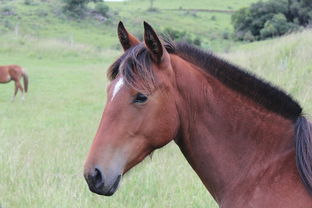Animal Encyclopedia:Knowledge and Answers in English
- 百科问答
- 2025-09-29
- 74
Welcome to the Animal Encyclopedia: Knowledge and Answers in English! This comprehensive guide aims to provide a wealth of information about the animal kingdom, from the tiniest insects to the largest mammals. Whether you're a student, a teacher, a researcher, or simply an animal enthusiast, this encyclopedia will serve as an invaluable resource for learning about the diverse and fascinating world of animals.
I. Introduction to the Animal Kingdom
The animal kingdom, or Animalia, is one of the largest phyla in the biological classification system. It includes over 1.5 million known species, ranging from simple single-celled organisms to complex multicellular creatures. Animals are characterized by their ability to move spontaneously and independently, their heterotrophic mode of nutrition (they cannot produce their own food and must consume other organisms), and their lack of cell walls.
II. Classification of Animals
Animals are classified into various groups based on their physical characteristics, genetic relationships, and evolutionary history. The main classes of animals include:
-
Mammalia: Mammals are warm-blooded vertebrates that give birth to live young and nurse them with milk. Examples include humans, elephants, and whales.
-
Aves: Birds are warm-blooded vertebrates with feathers, beaks, and hollow bones. They are known for their ability to fly. Examples include eagles, penguins, and ostriches.
-
Reptilia: Reptiles are cold-blooded vertebrates with scales or scutes. They lay eggs and include species like snakes, lizards, and crocodiles.
-
Amphibia: Amphibians are cold-blooded vertebrates that typically live in water but can survive on land. They undergo metamorphosis from a larval stage to an adult stage. Examples include frogs, salamanders, and newts.
-
Fish: Fish are aquatic animals with gills and fins. They can be classified into two main groups: cartilaginous fish (like sharks and rays) and bony fish (like tuna and salmon).
-
Arthropoda: Arthropods are invertebrates with jointed limbs and an exoskeleton. This class includes insects, spiders, crustaceans, and others.
-
Mollusca: Mollusks are soft-bodied invertebrates with a muscular foot. They include snails, clams, and octopuses.
-
Annelida: Annelids are segmented worms, such as earthworms and leeches.
-
Cnidaria: Cnidarians are simple, aquatic animals with stinging cells. They include jellyfish, sea anemones, and corals.
III. Animal Behavior and Adaptations
Animals have developed a wide range of behaviors and adaptations to survive and thrive in their environments. Some key behaviors include:
- Predation: The act of hunting and killing other animals for food.
- Herbivory: Feeding on plants.
- Carnivory: Feeding on other animals.
- Omnivory: Eating both plants and animals.
- Mimicry: The ability of an animal to resemble another species to avoid predators or attract prey.
- Camouflage: The use of coloration or patterns to blend into the environment and avoid detection.
Adaptations can be physical, such as the wings of a bird or the webbed feet of a duck, or behavioral, such as the migration patterns of certain species.
IV. Endangered Species and Conservation
Many animal species are threatened with extinction due to habitat loss, climate change, pollution, and human activities. Conservation efforts aim to protect these species and their habitats. Key strategies include:
- Habitat Preservation: Protecting and restoring natural habitats to support wildlife.
- 立法保护: Implementing laws and regulations to protect endangered species.
- Reintroduction Programs: Releasing captive-bred animals back into the wild to boost populations.
- Public Education: Raising awareness about the importance of biodiversity and the threats to wildlife.
V. Frequently Asked Questions (FAQs)
-
What is the largest animal in the world? The blue whale is the largest animal known to have ever existed, reaching lengths of up to 100 feet (30 meters) and weighing as much as 200 tons (180 metric tonnes).
-
Can animals communicate with each other? Yes, animals communicate in various ways, including vocalizations, body language, and chemical signals.
-
Do all animals sleep? Most animals do sleep or have a form of rest to conserve energy and allow their bodies to recover.
-
What is the smallest animal in the world? The smallest known animal is the Myxoma virus, which is so small that thousands of them could fit on the tip of a pin.


-
How do animals adapt to different environments? Animals adapt to their environments through a combination of physical traits, behaviors, and sometimes even physiological changes.
VI. Conclusion
The Animal Encyclopedia: Knowledge and Answers in English provides a broad overview of the animal kingdom, from classification and behavior to conservation and FAQs. This resource is designed to educate and inspire curiosity about the incredible diversity of life on Earth. As we continue to learn more about the animal world, it is crucial to remember the importance of preserving these species for future generations to study and appreciate.























